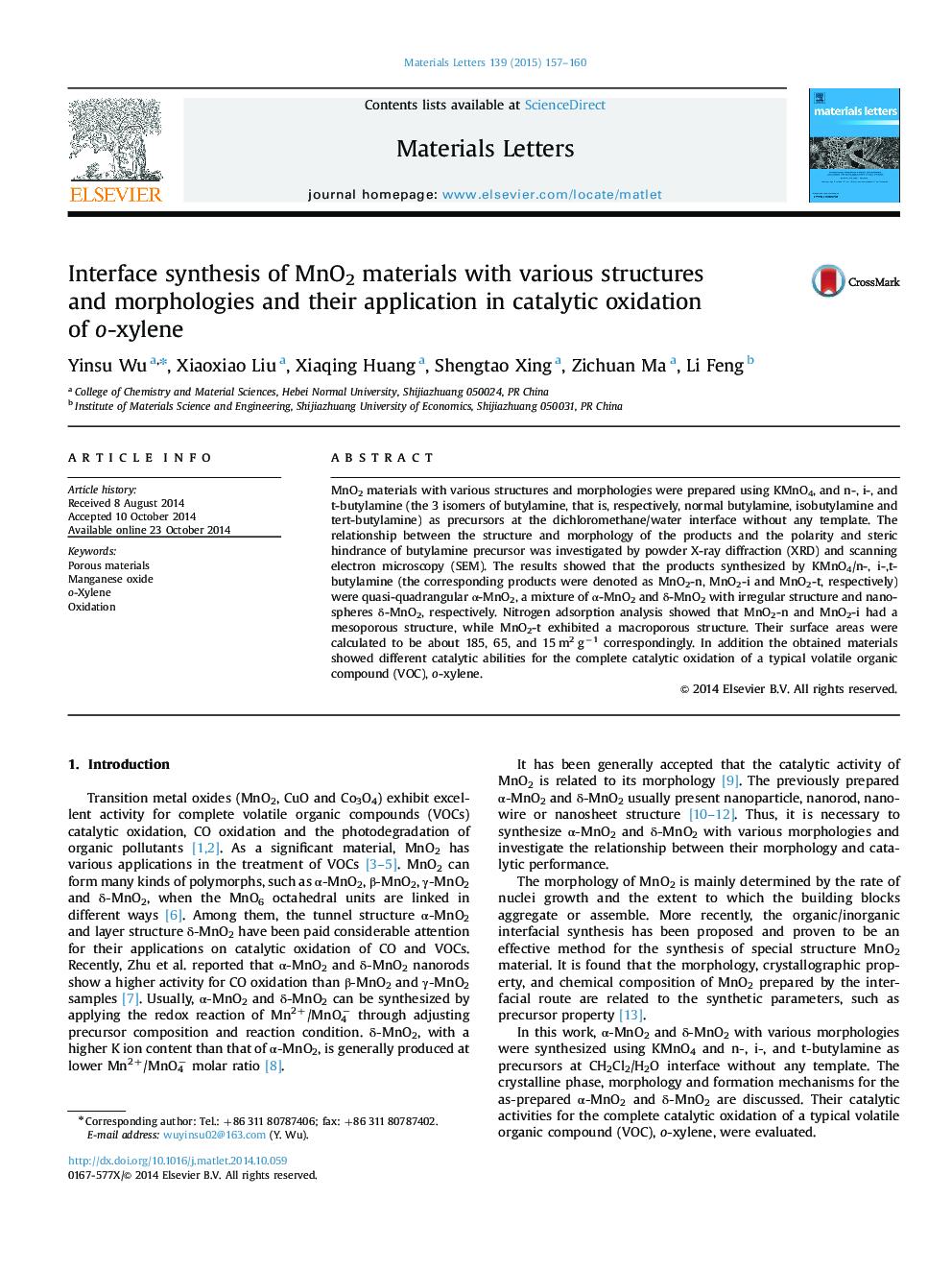| Article ID | Journal | Published Year | Pages | File Type |
|---|---|---|---|---|
| 1643543 | Materials Letters | 2015 | 4 Pages |
•MnO2 with various structures and morphologies were prepared using KMnO4/butylamine.•The polarity and steric hindrance of butylamine isomers affect the texture of MnO2.•The mechanism of the morphological and textural change of the materials was proposed.•The materials possessed good catalytic activity for catalytic oxidation of o-xylene.
MnO2 materials with various structures and morphologies were prepared using KMnO4, and n-, i-, and t-butylamine (the 3 isomers of butylamine, that is, respectively, normal butylamine, isobutylamine and tert-butylamine) as precursors at the dichloromethane/water interface without any template. The relationship between the structure and morphology of the products and the polarity and steric hindrance of butylamine precursor was investigated by powder X-ray diffraction (XRD) and scanning electron microscopy (SEM). The results showed that the products synthesized by KMnO4/n-, i-,t-butylamine (the corresponding products were denoted as MnO2-n, MnO2-i and MnO2-t, respectively) were quasi-quadrangular α-MnO2, a mixture of α-MnO2 and δ-MnO2 with irregular structure and nano-spheres δ-MnO2, respectively. Nitrogen adsorption analysis showed that MnO2-n and MnO2-i had a mesoporous structure, while MnO2-t exhibited a macroporous structure. Their surface areas were calculated to be about 185, 65, and 15 m2 g−1 correspondingly. In addition the obtained materials showed different catalytic abilities for the complete catalytic oxidation of a typical volatile organic compound (VOC), o-xylene.
